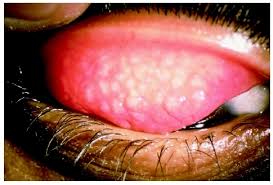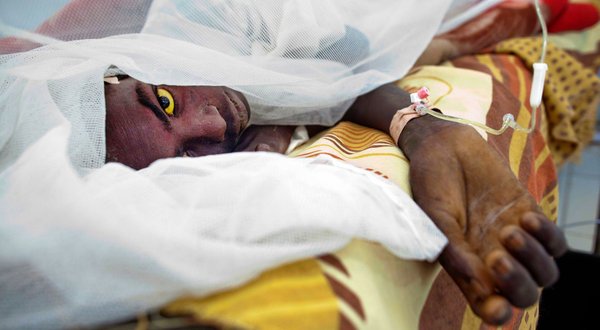 Trachoma is a contagious bacterial infection which affects the conjunctival covering of the eye, the cornea, and the eyelids. It is often associated with poverty and lack of proper hygiene. Trachoma is caused by the Chlamydia trachomatis bacteria and is essentially totally preventable and curable. It is the leading infections cause of blindness in the world. Trachoma is responsible for the visual impairment of about 1.8million people of whom 0.5 million are irreversible blindness. This represents 1.4% of the global total of blind individuals (WHO, 2015). The disease disproportionally affects women and children.
Trachoma is a contagious bacterial infection which affects the conjunctival covering of the eye, the cornea, and the eyelids. It is often associated with poverty and lack of proper hygiene. Trachoma is caused by the Chlamydia trachomatis bacteria and is essentially totally preventable and curable. It is the leading infections cause of blindness in the world. Trachoma is responsible for the visual impairment of about 1.8million people of whom 0.5 million are irreversible blindness. This represents 1.4% of the global total of blind individuals (WHO, 2015). The disease disproportionally affects women and children.
How does one get Trachoma?
Infection usually occurs where there is water scarcity. Infection usually starts during infancy and if untreated infection with time turns the eyelid to turn inwards, this makes the eyelashes rub/scrub the eyeballs resulting in pains and scares of the front eye. By the age of 30 to 40years visual impairment or irreversible blindness occurs (WHO, 2015). Transmission is by contact with the eye and nose discharge of an infected person. Flies help with easy transmission of the eye and nose discharges. Living in close proximity with infected persons, one can easily get infected too.
Distribution
Africa remains the most affected continent. Others include parts of Asia, Central and South America, Australia and Middle East. Currently, Ghana has reported the achievement of elimination outcome indicators, and are now undertaking surveillance (International Coalition for Trachoma Control, 2014)
Signs and Symptoms
The principal signs and symptoms in the early stages of trachoma include:
• Mild itching and irritation of the eyes and eyelids
• Discharge from the eyes containing mucus or pus
As the disease progresses, later trachoma symptoms include:
• Marked light sensitivity (photophobia)
• Blurred vision
• Eye pain
Prevention & Control measures
If you’re traveling to parts of the world where trachoma is common, be sure to practice good hygiene to prevent infection.
If you’ve been treated for trachoma with antibiotics or surgery, reinfection is always a concern. For your protection and for the safety of others, be sure that family members or others you live with are screened and, if necessary, treated for trachoma.
Although no vaccine is available, trachoma prevention is possible. The World Health Organization (WHO) has developed a health strategy to prevent trachoma, with the goal of eliminating trachoma in the world by 2020. The strategy is titled SAFE, which includes:
• Surgery to treat advanced forms of trachoma
• Antibiotics to treat the infection and prevent further spread of infection
• Facial cleanliness
• Environmental improvements, particularly in water, sanitation and fly control, to lower disease transmission
Treatment of Trachoma
• For early stage treatment -Antibiotic treatment (Tetracycline eye ointment, oral azithromycin)
• Later stage: Surgery
Compiled by:
Mabel Kissiwah Asafo and Irene Owusu Poku
GHANA HEALTH SERVICE, HEALTH PROMOTION UNIT
ASHANTI HEALTH PROMOTION WEEKLY BULLETIN WEEK 6,
August 24, 2015





